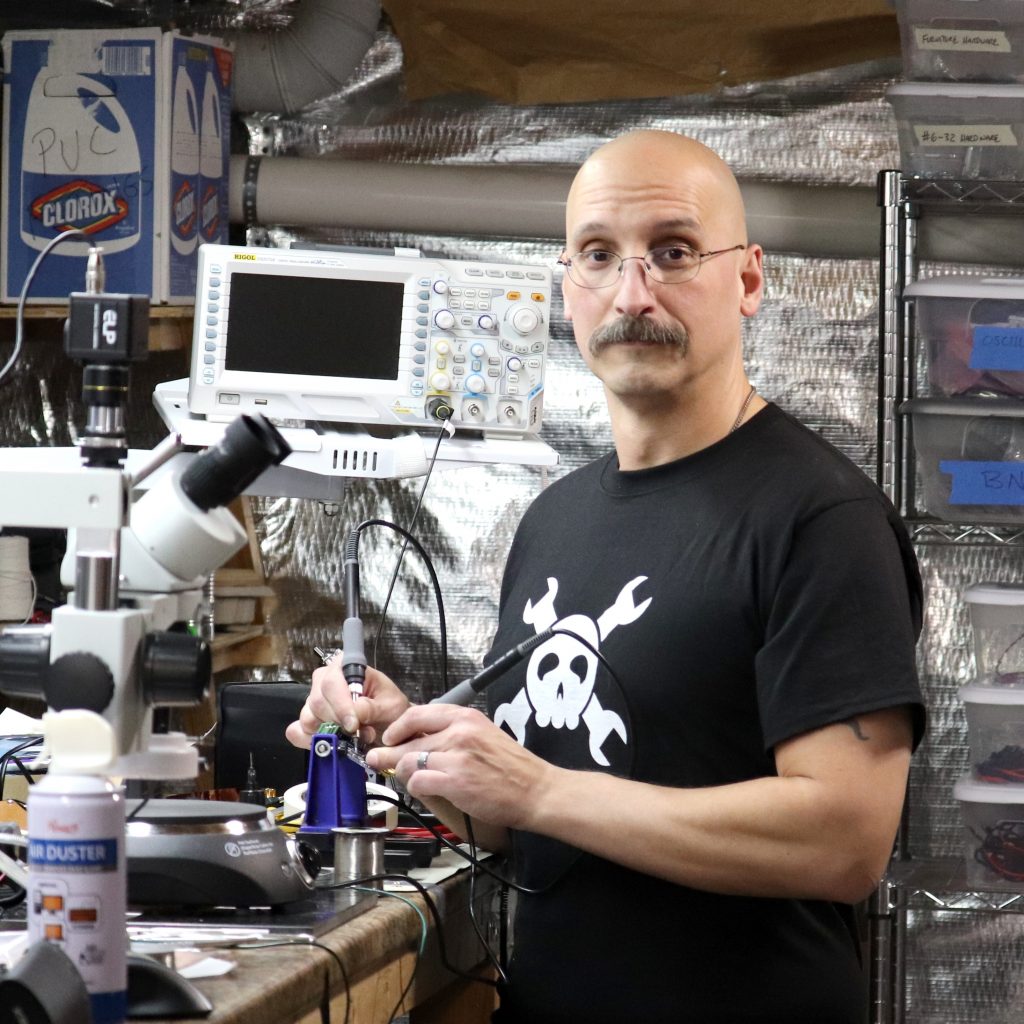Podcast: Play in new window | Download
Subscribe: Apple Podcasts | RSS

Ted is a fan of soldering AND stock photography
This episode is sponsored by Rohde and Schwarz. Check out AskAnEngineer.us for more info about their value line test equipment.
- Ted is a lifelong electronics hobbyist
- He studied engineering physics in college.
- Full color faxes were a thing in Japan but never took off elsewhere.
- After working on scanning equipment, he moved on to doing networking work.
- He also did some consulting after Cisco.
- Mid-way through his career, he went back to graduate school.
- Wrote a paper about finding telephone wires using LIDAR for helicopter pilots.
- Transitioned into AR, sort of like Projection Mapping. It was used for architectural daylighting simulation.
- Going back to school is tough for what you remember. Ted had to relearn linear algebra. He recommends using Gilbert Strang’s lectures, which gave more context.
- After school, Ted did consulting with a few partners, mostly New England.
- Ted got started posting to Hackaday with 2016 HaD prize.
- His first entry was the “Diode clock“, which utilizes the fact that diodes act like switches for RF when you pass DC current through them.
- “Upping serendipity quotient”
- Using diodes as an AND gate
- Using pin diodes for a doppler radio project
- 1n4007 can act as a crude pin diode at certain frequency
- Built digital clock that uses diodes for the counters
- Assembly instructions – 46 boards!
- Power supply is around 6 MHz
- One of his other popular projects is the Tritiled, which helps figuring out where things are in the dark
- Based around the idea of tritium lights
- Modern LEDs are extremely efficient at a certain current
- Droop happens at higher currents
- The 8 GHz sampling oscilloscope is a more recent project
- Research came out of the diode clock
- Schottky diodes for sampling
- Tek S4 sampling head 14.5 GHz
- Diodes can switch in 10-15 pS
- Stroboscopic effect
- Equivalent time sampling
- Tek 11801 from 1989
- Nyquist still applies
- Verifying on the bench is difficult
- Paper from picosecond pulse lab
- Jim Williams using an avalanche diode or a step response diode
- Looking at RMS error
- Another architecture 1975 by SP McCabe
- Using a fast comparator to sample waveform, similar to a successive approximation ADC
- ADCMP582
- That’s the time base calibration
- What will people be able to build with an 8 GHz scope?
- Using it to measure transmission lines on PCB boards
- Using Time Domain Reflectometry
- Ted has a splitter TDR head
- Tracking generator + Spectrum analyzer = Scalar network analyzer
- Rigol came out with cheap spectrum analyzer, DSA815, Ted got one of the early units
- Tracking generator outputs signals that are the same as the frequency on the spectrum analyzer
- Ted gave a talk about this at last year’s Hackaday Superconference
- There is no phase in an SNA
- SNAs are harder to calibrate
- Paper was about how to do two measurements to compensate for errors in the generator
- Chris has a friend doing Python scripting on test equipment via their ethernet jacks.
You can find Ted on Twitter, Hackaday.io and as a writer for Hackaday

That…. that’s not how you use soldering irons.
So you did not get the first line: “Ted is a fan of soldering AND stock photography”